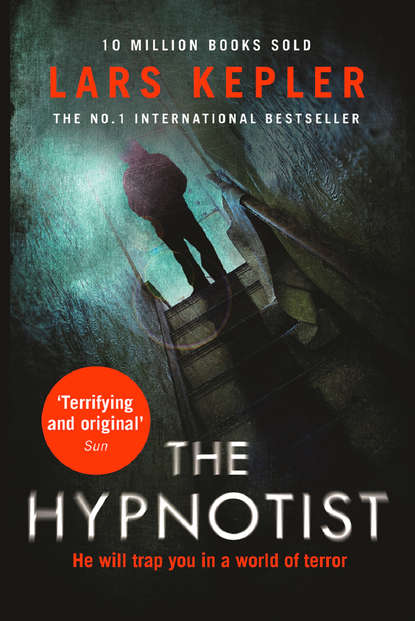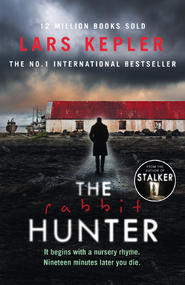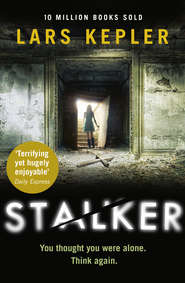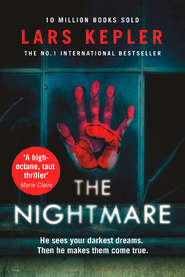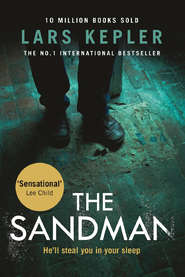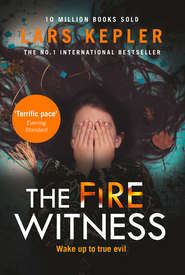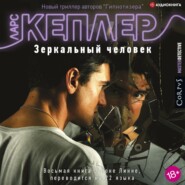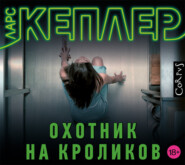По всем вопросам обращайтесь на: info@litportal.ru
(©) 2003-2025.
✖
The Hypnotist
Настройки чтения
Размер шрифта
Высота строк
Поля
“He’s right, though, isn’t he?” she asks.
“No,” replies Benjamin feebly.
“I think maybe he is,” she says, half smiling as she takes his hand in hers.
14
tuesday, december 8: morning
The Department of Forensic Medicine is located in a redbrick building in the middle of the huge campus of the Karolinska Institute. And inside the department is the glossy white and pale matt grey office of Nils Åhlén, Chief Medical Officer, aka The Needle.
After giving his name to a girl at reception, Joona Linna is allowed in.
The office is modern and expensive and comes with a designer label. The few chairs are made of brushed steel, with austere white leather seats, and the light comes from a large sheet of glass suspended above the desk.
The Needle shakes Joona’s hand without getting up. He is wearing white aviator-framed glasses and a white turtleneck under his white lab coat. His face is clean-shaven and narrow, the grey hair is cropped, his lips are pale, his nose long and uneven.
“Good morning,” he says, in a hoarse voice.
On the wall hangs a faded colour photograph of The Needle and his colleagues: forensic pathologists, forensic chemists, forensic geneticists, and forensic dentists. They are all wearing white coats, and they all look happy. They are standing around a few dark fragments of bone on a bench; the caption beneath the picture states that this is a find from an excavation of ninth-century graves outside the trading settlement of Birka on the island of Björkö.
“New picture,” says Joona.
“I have to stick photos up with tape,” says The Needle discontentedly. “In the old pathology department they had a picture sixty feet square.”
“Wow,” replies Joona.
“Painted by Peter Weiss.”
“The writer?”
The Needle nods; the light from the desk lamp reflects off his aviators. “Yes. He painted portraits of all the staff in the forties. Six months’ work, and he was paid six hundred kronor, or so I’ve heard. My father is in the picture among the pathologists; he’s down at the end.” The Needle tilts his head to one side and returns to his computer. “I’m just working on the postmortem report from the Tumba murders,” he says.
“Yes?”
The Needle peers at Joona. “Carlos rang up to hassle me this morning.”
Joona smiles sweetly. “I know.”
The Needle pushes his glasses back. “I gather it’s important to establish the time of death of the different victims.”
“Yes, we need to know the order.”
The Needle searches on the computer, his lips pursed. “It’s only a preliminary assessment, but—”
“The man died first?”
“Exactly. I based that purely on the body temperature,” he says, pointing at the screen. “Erixon says both locations, the locker room and the house, were roughly the same temperature, so my estimate was that the man died just over an hour before the other two.”
“And have you changed your mind now?”
The Needle shakes his head and gets up with a groan. “Slipped disc,” he mutters, as he sets off down the hall.
Joona follows him as he limps slowly toward the postmortem unit. They pass a room containing a freestanding dissection table made of stainless steel; it looks like a draining board but with rectangular sections and a raised edge all round it. They enter a cool room where bodies being examined by the forensic unit are preserved in drawers at a temperature of forty degrees Fahrenheit. The Needle stops and checks the number, pulls out a large drawer, and sees that it’s empty.
“Gone,” he says, and they return to the corridor. As they walk, Joona notices that the floor is marked with thousands of scuffs from the wheels of trolleys. They reach another room and The Needle holds the door open for Joona.
They are in a well-lit white-tiled room with a large hand basin on the wall. Water is trickling into a drain in the floor from a bright yellow hose. On the long dissection table, which is covered in plastic, lies a naked, colourless body marked with hundreds of black wounds.
“Katja Ek,” states Joona.
The dead woman’s face is remarkably calm; her mouth is half open and her eyes have a serene look about them. She looks as if she is listening to beautiful music, but her peaceful expression is at odds with the long, vicious slashes across her forehead and cheeks. Joona allows his gaze to roam over Katja Ek’s body, where a marbled veining has already begun to appear around her neck.
“We’re hoping to get the internal examination done this afternoon.”
Joona sighs. “God, what a mess.”
The other door opens and a young man with an uncertain smile comes in. He has several rings in his eyebrows, and his dyed black hair hangs down the back of his white coat in a ponytail. With a little smile, The Needle raises one fist in a hard rock greeting, pinkie and index finger aloft like devil’s horns, which the young man immediately reciprocates.
“This is Joona Linna from National CID,” The Needle explains. “He comes to visit us now and again.”
“Frippe,” says the young man, shaking hands with Joona.
“He’s specialising in forensic medicine,” says The Needle.
Frippe pulls on a pair of latex gloves, and Joona goes over to the table with him; the air surrounding the woman is cold and smells unpleasant.
“She’s the one who was subjected to the least amount of violence,” The Needle points out. “Despite multiple cuts and stab wounds.”
They contemplate the dead woman. Her body is covered in large and small punctures.
“In addition, unlike the other two, she has not been mutilated or hacked to pieces,” he goes on. “The actual cause of death is not the wound in her neck but this one, which goes straight into the heart, according to the computer tomography.” He indicates a relatively unimpressive-looking wound on her sternum.
“But it is a little difficult to see the bleeds on the images,” says Frippe.
“Naturally, we’ll check it out when we open her up,” The Needle says to Joona.
“She fought back,” says Joona.
“In my opinion she actively defended herself at first,” replies The Needle, “based on the wounds on the palms of her hands, but then she tried to escape and simply tried to protect herself.”
The young doctor studies The Needle intently.
“Look at the injuries on the outer arms,” says The Needle.
“Defensive wounds,” mutters Joona.
“Exactly.”





